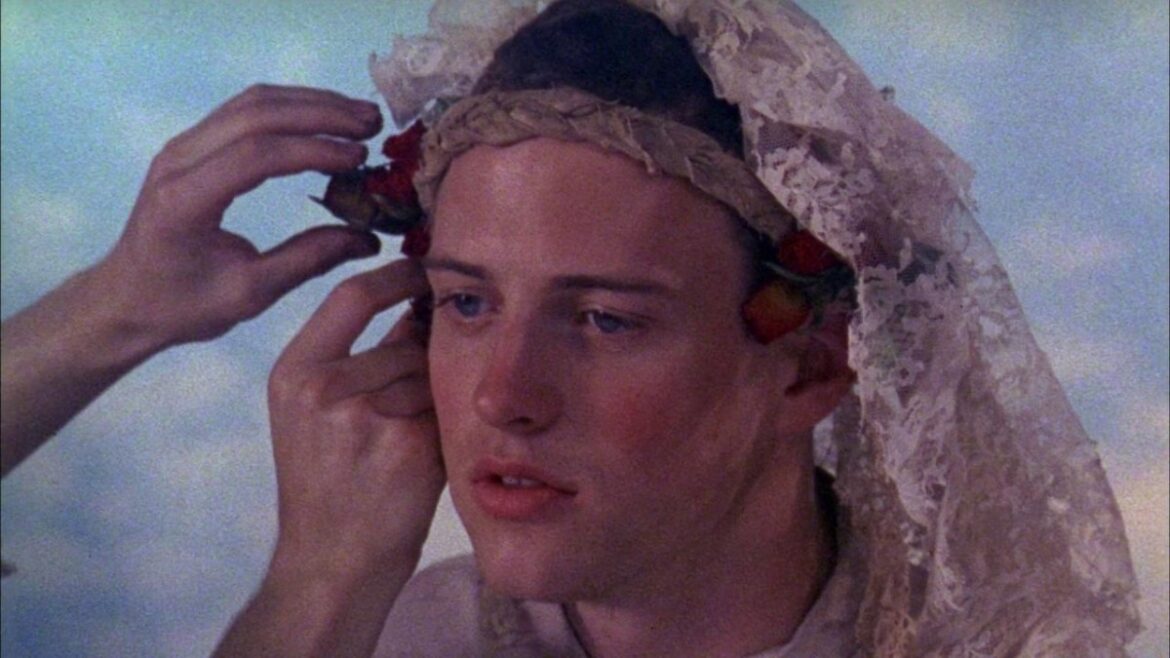In 1991 when Todd Haynes released his feature length debut Poison, the feeling in the LGBTIQ+ community was that everyone was still dying. The ravages of HIV/AIDs and the United States government’s callous denial of the realities of HIV laid waste to an entire generation of queer people.
“The whole world is dying of panicky fright”– Jean Genet
Todd Haynes was determined to make a film about “revolt…at a lot of the sense of culpability that the gay community was accepting or taking on in the light of that crisis”. Looking to the work of 20th century novelist and radical queer Jean Genet (whom I have previously written about), Todd used the trinity of Genet’s prison novels (Our Lady of the Flowers, The Thief’s Journal and The Miracle of the Rose) as the inspiration for his own trinity of sorts as Poison is not one film but three.
Three interlocking narratives of different genre, framing, tone, and style makeup Poison: Hero, Horror and Homo. Although set in different times, with different actors and no crossover plot lines whatsoever, somehow Poison is a homogeneous work.
Hero
The Long Island suburb of Glenville is shocked by the shooting death of Richie Beacon’s father in the early hours of the morning. More surprising, however, is his mother’s insistence that her son, after killing his father, jumped from the open window and took flight like a bird. He became “an angel of judgment.”
Shot as a news magazine segment with talking heads and shot on tape, Hero centers on the absent Richie trying to uncover his history and what led to shooting his father.
The richness of the narrative comes from the complex character of Richie as detailed by his classmates, neighbors, doctor, teacher, social worker and his mother. Withdrawn and intelligent, Richie was also a highly imaginative chronic liar. He was sensitive, but seemed to enjoy physical violence towards himself.
Suppressed of his imagination and shamed for his tenderness
His mother (Edith Meeks), an empty-headed suburban housewife, recounts the events leading up to her abusive husband’s murder and the astonishing claim of Richie’s escape. She loved her child, but seemed oblivious to the hurt he received from his father and schoolmates. No one interviewed, not even his mother, can account for the fact the child seemed to have a sexually transmitted illness or why he encouraged a fellow schoolmate to discipline him via spanking.
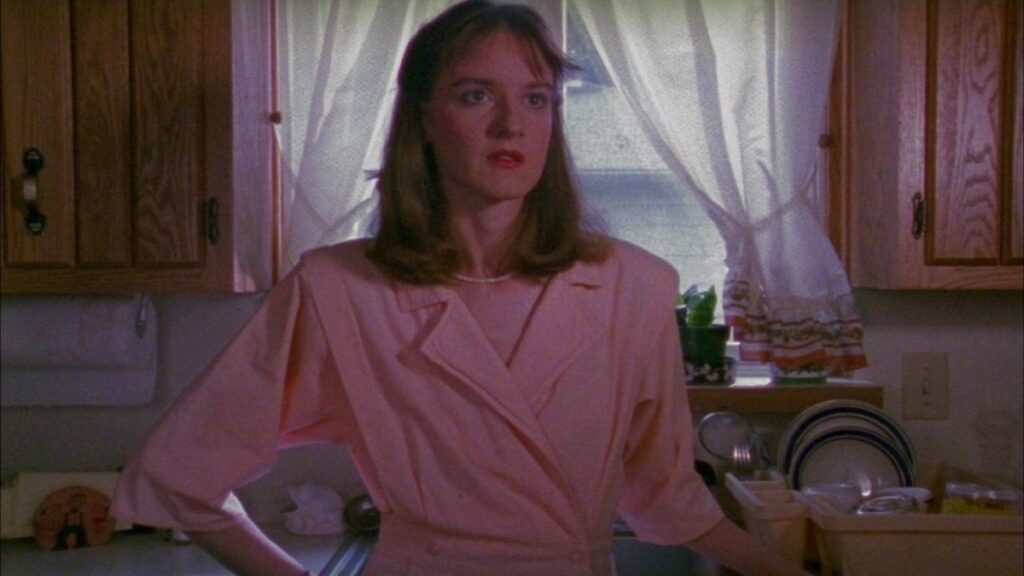
Felicia Beacon (Edith Meeks) Richie Beacon’s mother talks about her child to the camera in the “Hero” segment of “Poison”. (Killer Films/Zeitgeist Films)
Richie embodies a type of childhood many young gay men had (aside from, you know, the patricide.) The contempt of his neighbors and classmates, the blind lack of understanding from his mother, and the brutal discipline of his father. Richie’s imagination is suppressed, and he is shamed for his tenderness. He reacts with violence, as it’s the only way he knows how.
And in the end, his father, while strangling his wife after discovering her affair with the local gardener, is shot with his own gun by Richie. For this foreigner, the ubiquitous-ness of guns is still a culture shock for myself, but for American audiences, Richie’s ability to easily access his father’s firearm is probably quite banal. One can hope for the eventual eradication of gun violence in the home, but the significant cultural shift it will necessitate may not occur within my lifetime.
Horror
Whereas Hero is understated and almost pedestrian, Horror is its complete opposite. Shot as a B-Horror film of the late 50s, Horror follows the ambitious and experimental scientist Dr Thomas Graves (Larry Maxwell) as he synthesizes the “human sex drive.” In a brief lapse of concentration (and, to my mind, thoroughly substandard laboratory practice) he drinks the “bio-magnetic gas” instead of his coffee and unleashes havoc onto the local community. Graves’ kiss brings death as pustular lesions start forming on his skin, plaguing the entire city as the ‘Leper Sex Killer.’
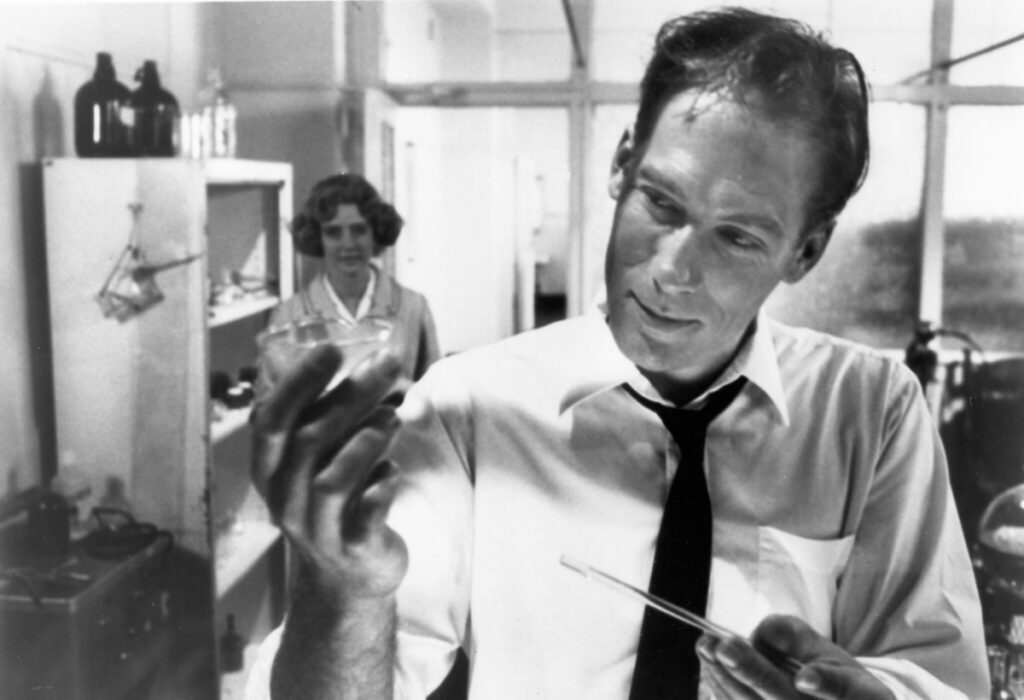
Dr Thomas Graves (Larry Maxwell) investigates his “biomagnetic gas” as his new intern Dr Nancy Olsen (Susan Norman) looks on with interest in the “Horror” segment of “Poison”. (Killer Films/Zeitgeist Films)
Horror is in no way subtle about being an analogue for the AIDS crisis, but its sincerity and deep reverence for horror films of the period make it entertaining and unsentimental. In shadowy black and white, with time appropriate special effects and music, Horror sees Dr. Graves rejected by society, only receiving the love and support of his acolyte Dr. Nancy Olsen (Susan Norman) whom he eventually infects.
You think I’m dirt, don’t you?
Dr. Graves’ shame and anger at the abuse he receives from society compound his descent as he operates as both Frankenstein and Frankenstein’s Monster. Dr. Graves’ final confrontation with an angry mob baying for his blood is most on-the-nose statements:
“You think I’m scum. You think I’m dirt, don’t you? Every one of you down there is exactly the same, only you’ll never know it… cause you’ll never know what pride is. Cause pride is the only thing that lets you stand up to misery… the kind of misery the whole stinking world is made of.”
Horror most explicitly touches on the film’s central thesis: “society poisons all of us no matter how fully we choose to participate in its rules and regulations,” as Todd Haynes was quoted in 1991 in New York Newsday. Dr. Graves is both the victim and the murderer, his negligence over punished by society demanding vengeance while also selling masks of his hideously infected face. It is of deep and bitter irony that Larry Maxwell did eventually pass away from HIV-related illness. He was 43.
RELATED LINK: Un Chant D’Amour (1950) is the Proto-Gay Porn Film
Homo
Fontenal prison receives Johnny Broom (Scott Renderer) for theft and homosexuality. “Prisons were not new to me,” says Johnny. “I lived in them all my life. In submitting to prison life, embracing it, I could reject the world that rejected me.” His only desire is to find within the shadows of prison life the “violence of love.” Intercut with his dour, cold and blue Fontenal is his memories of the “conceit world of men among men,” in a boys reformatory school Baton.
He remembers his youth in hyper floral pastels among other young offenders as they enact their own tender and brutal rituals of same sex marriage and hazing of a “golden doe” (a term for a virginal male youth, that Genet recorded from his stint in the Mettray Penal Colony.)
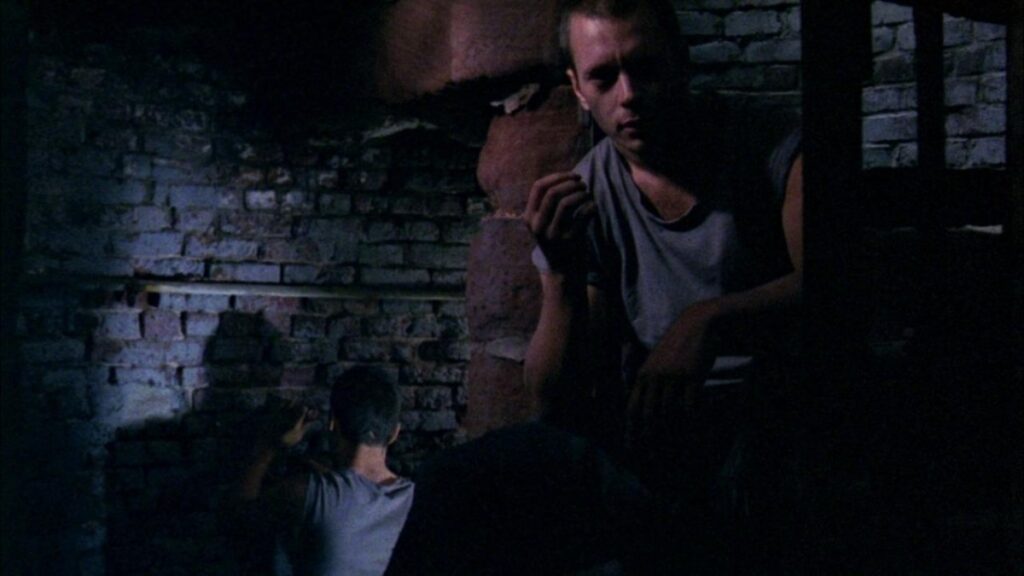
Johnny Broom (Scott Renderer) ponders his lust as he holds a finished cigarette in the “Homo” segment of “Poison”. (Killer Films/Zeitgeist Films)
This aforementioned “golden doe” comes back into Johnny’s life. The film’s editor, James Lyons, also portrays Jack Bolton, a hardened thief sent to Fontenal, where Johnny grows lustful and envious of him.Their friendship grows bitter with jealousy as Jack’s popularity within the prison shoots higher than Johnny, and prison big shot Rass (John R. Lombardi) starts to groom the young Jack for a life outside the prison walls.
The most direct adaptation of Genet’s prison trilogy
Todd Haynes’ Homo being the most direct adaptation of Genet’s prison trilogy (more specifically The Miracle of the Rose) is a loving testament to the influential writer. Often peppered with Genet’s nihilistic poetry, Homo‘s Johnny Broom operates as an avatar of Genet, being the perpetual outsider, brooding over the rough flesh of his fellow inmates. Although initially the contrast of the soft autumnal glow of his memories contrasts with the brutal filthy prison, eventually the story displays the dark reality of his past in the film’s most controversial scene.
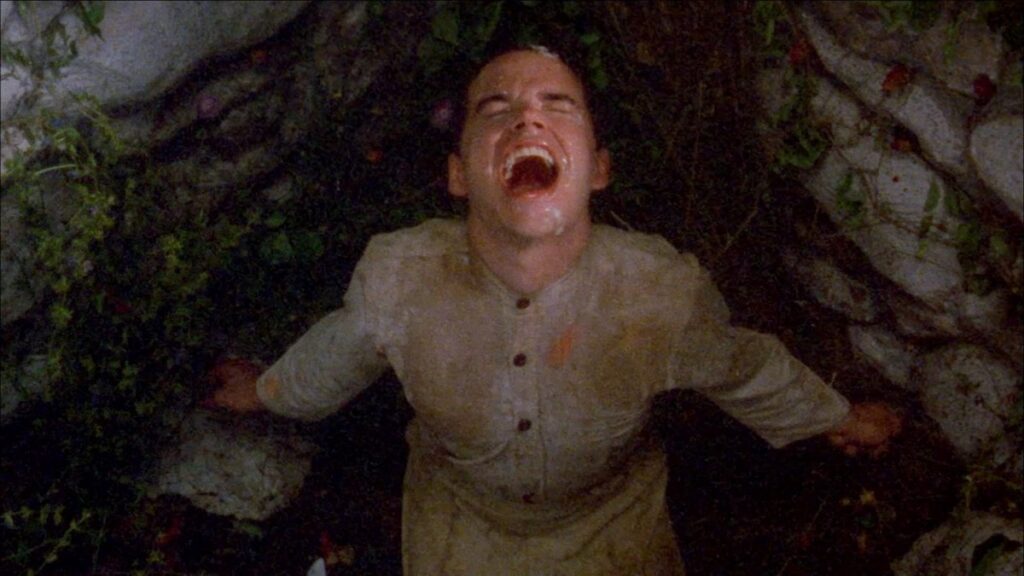
The controversial hazing of a young Jack Bolton (Andrew Harpending) in Johnny Broom’s memory within the “Homo” segment of “Poison”. (Killer Films/Zeitgeist Films)
A stylized bukkake analogue comes when the younger Jack Bolton (Andrew Harpending) is made by his companions to stand his mouth open wide as the cruel boys begin projectile spitting over his face and in his open mouth. It surprises me that I, who am a shameless lover of a good facial and cum swallowing, find this scene to be the most putrid yet poetic scene in the entire film. The appearance of a young John Leguizamo (credited as Damien Garcia) as one of the spitters is even more surprising. The younger Johnny (Tony Pemberton) gazes from afar, a bystander culpable in this man’s degradation. And yet, as Jack becomes saturated with saliva, he looks almost like he has an epiphany as flowers begin to shower him.
Todd Haynes’ antidote
Poison won the grand jury prize for dramatic feature at the Sundance Film Festival in 1991, but its funding from the National Endowment for the Arts generated scorn from the conservative media, spearheaded by a letter writing campaign from American Family Association’s Reverend Donald Wildmon. The American Family Association has been defined as an anti-LGBTIQ hate group by the Southern Poverty Law Center for its “propagation of known falsehoods.” The case with the campaign against Poison was no different.
The themes of Poison are still relevant today
The Rev. Wildmon condemned the film for its “explicit porno scenes of homosexuals involved in anal sex.” The NEA chairman John E. Frohnmayer defended the work acknowledging the brief anal sex scenes but labeling them “neither prurient or obscene”.
“I don’t suppose most Americans would object to their tax dollars being used for a film [about how] violence is destructive to the family”, said Frohnmayer at a press conference in 1991.
It is little comfort that the themes of Poison are still relevant today, even if the driving factor has shifted. The poison of this “panicky fright” continues.
The Swiss father of toxicology, Theophrastus von Hohenheim, more commonly known as Paracelsus stated eloquently: “All things are poison, and nothing is without poison; the dosage alone makes it so a thing is not a poison.”
We are now experiencing higher than normal doses of the poison of society: its shame, its hatred, and its hegemony. Modern toxicologists will remind you, though, that alongside dose, exposure (via time and method of transmission) are the other principles of toxicology Paracelsus did not codify.
Expose yourself to Poison. It may be the antidote to our dark world.
Todd Haynes’ Poison is available to watch on MUBI.
Sources: ArtForum, Killer Films/Zeitgeist Films, LA Times, New York State Writers Institute, SlashFilms, Southern Poverty Law Center, Todd Haynes at the Locarno Film Festival 2017,

